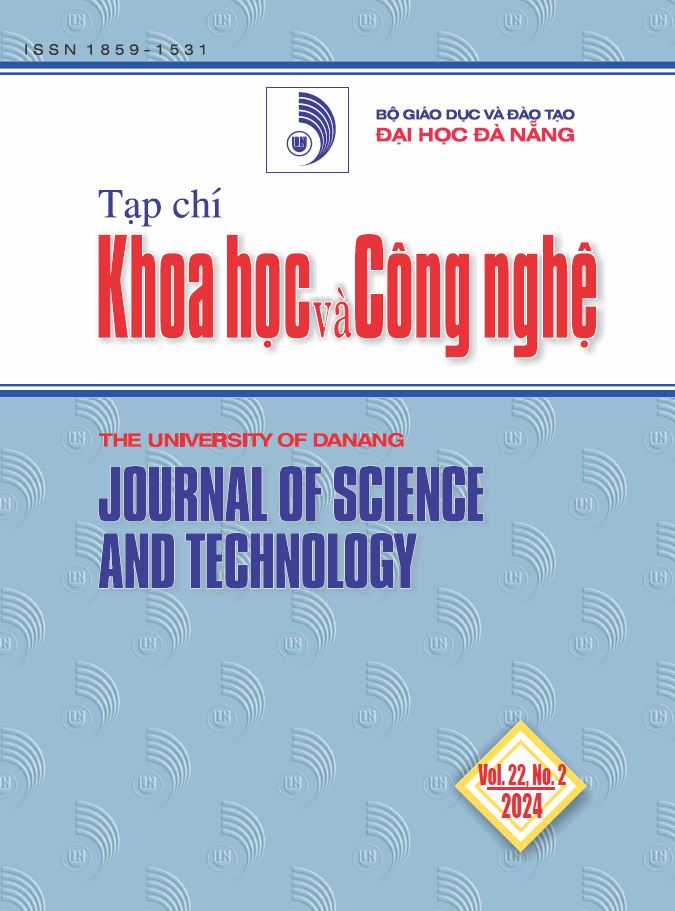Thực trạng các yếu tố ảnh hưởng đến kết quả học tập của sinh viên chưa tốt nghiệp đúng hạn tại Trường Đại học Sư phạm - Đại học Đà Nẵng
 Tóm tắt: 2237
Tóm tắt: 2237
 |
|  PDF: 3875
PDF: 3875 
##plugins.themes.academic_pro.article.main##
Author
-
Nguyễn Thị QuýTrường Đại học Sư phạm - Đại học Đà Nẵng, Đà Nẵng, Việt Nam
Từ khóa:
Tóm tắt
Theo thống kê của Trường Đại học Sư phạm - Đại học Đà Nẵng, có một tỉ lệ lớn sinh viên (SV) không đủ điều kiện để xét tốt nghiệp đúng hạn, trong đó lí do chủ yếu liên quan đến kết quả học tập. Nghiên cứu phân tích thực trạng các yếu tố ảnh hưởng đến kết quả học tập của SV chưa tốt nghiệp đúng hạn, bằng phương pháp điều tra khảo sát trên 240 mẫu, xây dựng mô hình hồi quy tuyến tính bội để dự đoán kết quả học tập của SV. Kết quả nghiên cứu chỉ ra 7 yếu tố có ảnh hưởng đến kết quả học tập của SV gồm: (1) Các chính sách hỗ trợ SV của nhà trường; (2) Vai trò của cố vấn học tập; (3) Vai trò của giảng viên; (4) Sự quan tâm của cha mẹ; (5) Động cơ học tập; (6) Năng lực tự học; (7) Phong cách học tập. Trong đó, năng lực tự học của SV là yếu tố tác động mạnh nhất. Từ đó, kết quả nghiên cứu là cơ sở để đề xuất các biện pháp nâng cao kết quả học tập cho SV.
Tài liệu tham khảo
-
[1] Otter, “Learning Outcomes in Higher Education”, in Outcomes, Learning And The Curriculum, 1st ed., London: Routledge, 1995, p. 12. doi: https://doi.org/10.4324/9780203485835.
[2] Allan, “Learning outcomes in higher education”, Studies in Higher Education, vol. 21, no. 1, pp. 93–108, Jan. 1996, doi: 10.1080/03075079612331381487.
[3] R. Young, B. R. Klemz, and J. W. Murphy, “Enhancing Learning Outcomes: The Effects of Instructional Technology, Learning Styles, Instructional Methods, and Student Behavior”, Journal of Marketing Education, vol. 25, no. 2, pp. 130–142, Aug. 2003, doi: 10.1177/0273475303254004.
[4] Adam, “Using Learning Outcomes”, in Report for United Kingdom Bologna Seminar, 2004, pp. 1–2.
[5] Kieu, “Key ministerial-level project: Research to develop methods and a set of tools to evaluate the quality of general education”, Code B2003-49-45TD, 2005.
[6] T. Tam, “Factors affecting the learning outcomes of full-time students at the University of Economics Ho Chi Minh City”, Institute of Quality Assurance - Hanoi National University, 2010.
[7] University of Science and Education – The University of Danang, “Decision No. 442/QĐ-ĐHSP-ĐT issued on 31 May 2016 promulgating 'Regulations on formal training under the credit system”, 2016.
[8] University of Science and Education – The University of Danang, “Decision No. 1473 /QĐ-ĐHSP-ĐT issued on 15 Otc 2019 promulgating 'Regulations on formal training under the credit system”, 2019.
[9] R. Young, B. R. Klemz, and J. W. Murphy, “Enhancing Learning Outcomes: The Effects of Instructional Technology, Learning Styles, Instructional Methods, and Student Behavior”, Journal of Marketing Education, vol. 25, no. 2, pp. 130–142, Aug. 2003, doi: 10.1177/0273475303254004.
[10] Watson and P. Yip, “How many were there When it Mattered?: Estimating the Sizes of Crowds”, Significance, vol. 8, no. 3, pp. 104–107, Sep. 2011, doi: 10.1111/j.1740-9713.2011.00502.x.
[11] Marjoribanks, “Family Background, Family Structure and Students’ Outcomes”, Family and School Capital: Towards a Context Theory of Students’ School Outcomes, 2002, pp. 23–51. doi: 10.1007/978-94-015-9980-1_2.
[12] R. Pintrich, “A Motivational Science Perspective on the Role of Student Motivation in Learning and Teaching Contexts”, J Educ Psychol, vol. 95, no. 4, pp. 667–686, 2003, doi: 10.1037/0022-0663.95.4.667.
[13] Bhandari, D. Chopra, and K. Singh, “Self-directed learning: assessment of students’ abilities and their perspective”, Adv Physiol Educ, vol. 44, no. 3, pp. 383–386, Jul. 2020, doi: 10.1152/advan.00010.2020.
[14] M. Reid, “Perceptual Learning Style Preference Questionnaire”, University of Wyoming, Department of English, Laramie, 1984.
[15] M. Quang, Theory and practice: Leadership capacity of university students. Ho Chi Minh City National University Publishing House, 2021.
[16] J. Cronbach, “Coefficient alpha and the internal structure of tests”, Psychometrika, vol. 16, no. 3, pp. 297–334, 1951, doi: 10.1007/BF02310555.
[17] Cristobal, C. Flavian, and M. Guinalíu, “Perceived e-service quality (PeSQ): measurement validation and effects on consumer satisfaction and web site loyalty”, Managing Service Quality, vol. 17, no. 3, Jan. 2007.
[18] C. Howard, “A Review of Exploratory Factor Analysis Decisions and Overview of Current Practices: What We Are Doing and How Can We Improve?”, Int J Hum Comput Interact, vol. 32, no. 1, pp. 51–62, Jan. 2016, doi: 10.1080/10447318.2015.1087664.
[19] F. Hair, “Multivariate Data Analysis: An Overview BT - International Encyclopedia of Statistical Science”, M. Lovric, Ed., Berlin, Heidelberg: Springer Berlin Heidelberg, 2011, pp. 904–907. doi: 10.1007/978-3-642-04898-2_395.
[20] -M. Dufour and M. G. Dagenais, “Durbin-Watson tests for serial correlation in regressions with missing observations”, J Econom, vol. 27, no. 3, pp. 371–381, 1985, doi: https://doi.org/10.1016/0304-4076(85)90012-0.
[21] Yuhua Qiao, Interstate Fiscal Disparities in America: A Study of Trends and Causes. New York and London: Routledge, 1999. doi: https://doi.org/10.4324/9780203824153.
[22] Krämer, “Durbin–Watson Test”, International Encyclopedia of Statistical Science, M. Lovric, Ed., Berlin, Heidelberg: Springer Berlin Heidelberg, 2011, pp. 408–409. doi: 10.1007/978-3-642-04898-2_219.
[23] Trọng and C. N. M. Ngoc, Analyzing Research Data with SPSS, Volume 2. Hong Duc Publishing House, 2005.
[24] Panjei, L. Gruenwald, E. Leal, C. Nguyen, and S. Silvia, “A survey on outlier explanations”, The VLDB Journal, vol. 31, no. 5, pp. 977–1008, 2022, doi: 10.1007/s00778-021-00721-1.
[25] Cousineau and S. Chartier, “Outliers detection and treatment: A review”, Int J Psychol Res (Medellin), vol. 3, no. 1, Jun. 2010, doi: 10.21500/20112084.844.
[26] K. A. Pituch and J. P. Steven, Applied Multivariate Statistics for the Social Sciences: Analyses with SAS and IBM’s SPSS. Routledge, 2016. doi: 10.4324/9781315814919.



